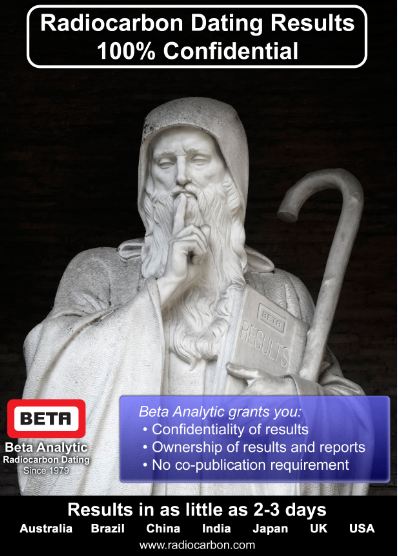Beta Analytic Q&A: Can Eggshells be Dated?
Monday, March 19th, 2012
![[SCM]actwin,0,0,0,0;ScreenshotCaptor.exe3/20/2012 , 3:00:33 AM](https://www.radiocarbon.eu/carbon-dating-blog/wp-content/uploads/2012/03/egg-shell.jpg) Eggshell can be dated – some had very reasonable dates, others not. The key factor is that the carbon present in the shell truly represented the time of life/death of the individual [or research subject] and is not of secondary origin.
Eggshell can be dated – some had very reasonable dates, others not. The key factor is that the carbon present in the shell truly represented the time of life/death of the individual [or research subject] and is not of secondary origin.
Eggshell generally have very high carbonate content and very little organic carbon. It is possible to analyze both the carbonate and the organic portion when enough material is present. Note that carbonate can be from old sources, which could make the date too old. The organic material, on the other hand, can make the date too young (due to younger contaminants physically present in the shell).
To date the carbonate portion, the lab dissolves the shell in acid and collects the evolved CO2 for radiocarbon analysis. For organic dating, the egg shell is charred at very high temperatures to turn the carbon into soot. This step is followed by acid washing to remove the carbonate prior to radiocarbon analysis. If the two dates agree, you have good confidence in age.
Sample Size Requirements
For AMS dating, Beta Analytic generally requires 50 mg of shells for most type of eggs (chicken, quail, etc.). For ostrich eggshell, the lab recommends sending 5-10 grams.
Radiocarbon Dating Ostrich Eggshells
Ostriches have a tendency to eat almost everything. If there is limestone or other carbonate surrounding the food, the old carbon within it will be incorporated into the developing eggshell. This will lead to a radiocarbon date (on the eggshell) which can be much older than the time of formation of the eggshell.
The best approach to radiocarbon dating ostrich eggshell is to date both the organic and inorganic fractions and then interpret accordingly when the results are obtained. A typical procedure is to first lightly acid etch the shell to remove any superficial contaminating carbonates and possibly a wash in alkali to remove humic acids (to be discussed with the researcher). Then the lab “chars” the organics at ~ 800C under static N2 atmosphere, then dissociate the carbonates at ~800C under low vacuum N2 flow, collecting the evolved CO2 for analysis representing the carbonate. Upon collection of all available carbonate-CO2, the N2 is replaced with O2 and the “charred” organics are then combusted and collected separately for analysis using available organic carbon-CO2.
The organic and inorganic fractions are analyzed as individual samples and charged separately. The analysis has two reported dates – one date on the organic fraction and one on the organic fraction.

SEND SAMPLES |
|---|
| Contact us for prices |
| Prepare Sample |
| Submit Data Sheet Online |
| See Shipment Guidelines |
| Shipping Addresses |
Carbon 14 Dating ServiceWould you like us to track your package? Are you filling out the online form? Read about sample material return Beta Analytic Other Services- d13C and d15N - d18O for carbonates - d2H and d18O for water |
Terms and Conditions



